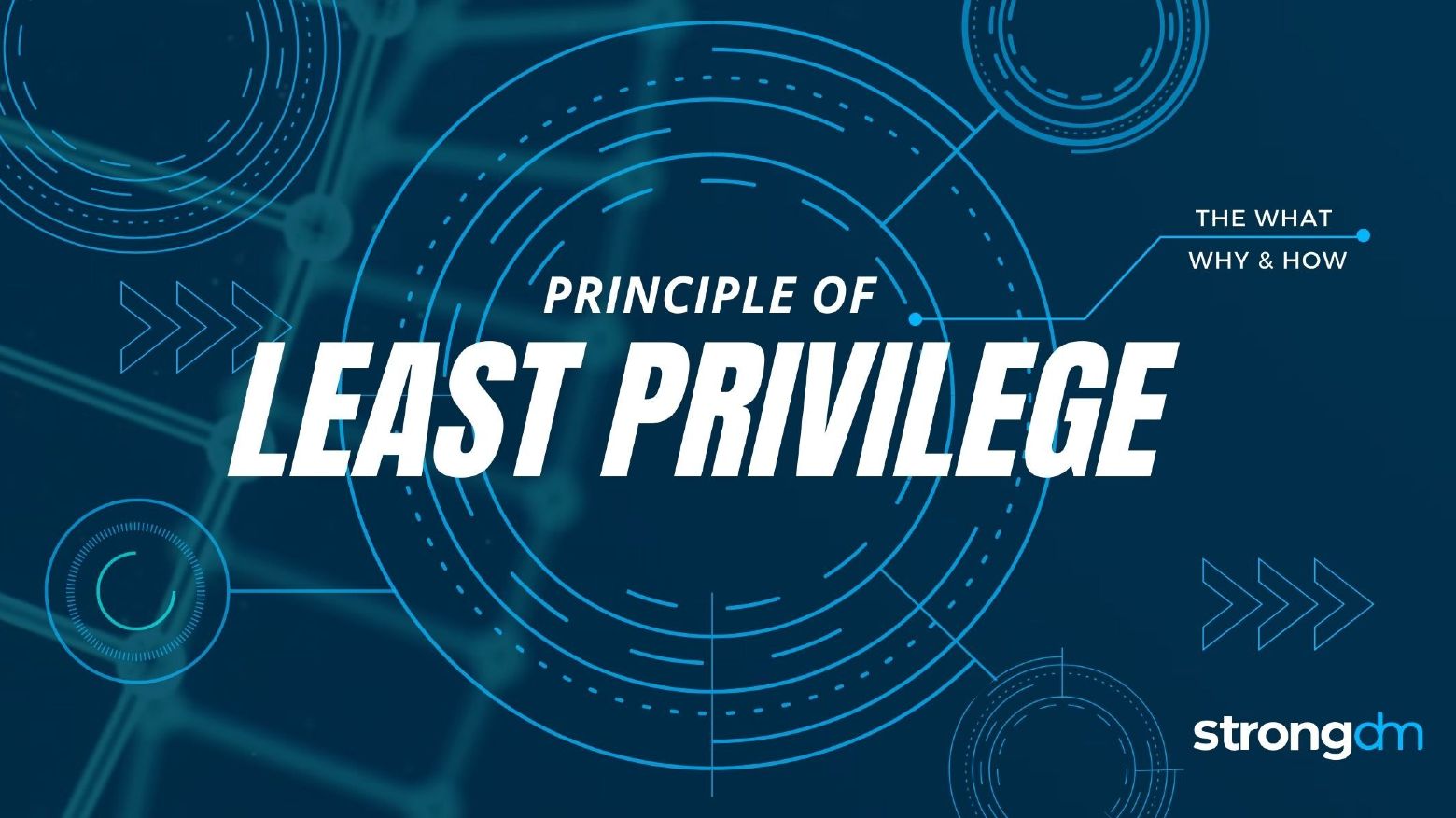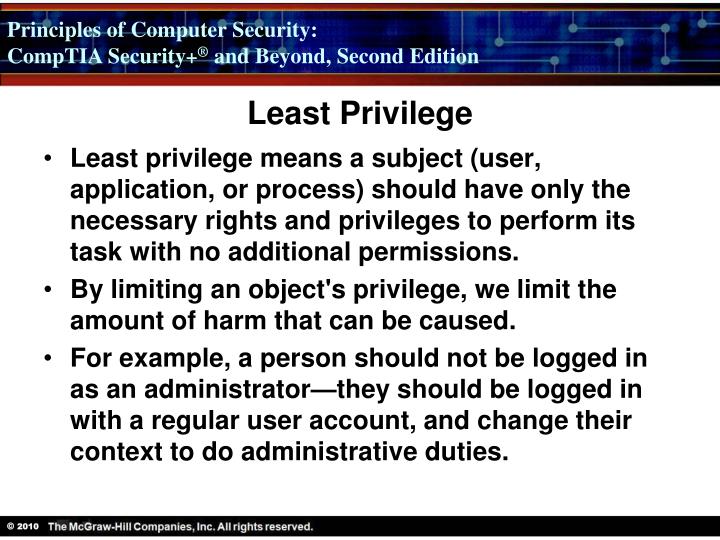

- #PRINCIPLE OF LEAST PRIVILEGE IN MANAGEMENT HOW TO#
- #PRINCIPLE OF LEAST PRIVILEGE IN MANAGEMENT INSTALL#
- #PRINCIPLE OF LEAST PRIVILEGE IN MANAGEMENT VERIFICATION#
- #PRINCIPLE OF LEAST PRIVILEGE IN MANAGEMENT PASSWORD#
MFA requires a user to provide two or more types of verification before they’re granted access to a network resource. IAM solutions employ automation and central dashboards to assist system administrators in administering user identities and controlling access to enterprise resources, particularly sensitive organizational systems and data.Įnable Multi-Factor Authentication (MFA) as an additional security layer to prevent breaches due to compromised credentials. The least privilege principle falls under the IAM umbrella.

Identity and access management (IAM) is an umbrella term referring to the policies and processes that ensure authorized users can access the network resources they need to perform their jobs. Use Identity and Access Management (IAM) Solutions The following are some tips for successfully implementing the PoLP in your organization.
#PRINCIPLE OF LEAST PRIVILEGE IN MANAGEMENT HOW TO#
How to Implement Least Privilege Access in Your Organization Once logged onto the network, users should have the minimum amount of network access they need to perform their jobs to ensure productivity, and not one iota more.īottom line: While it’s possible to achieve least privilege access without zero trust, the reverse is not true. All humans and machines must prove that they are who they say they are before they can access network resources. While older security models, such as castle and moat, focused on where end users were located (inside or outside the network perimeter), zero trust centers around who they are. Instead of implicitly trusting everyone and everything within the network perimeter, zero trust doesn’t implicitly trust anyone. Zero trust assumes that any human user or device could be compromised. Zero trust is a cybersecurity model with three core components, including the PoLP:Īssume breach. Least privilege and zero trust are different but closely-related cybersecurity concepts. What’s the Difference Between Zero Trust and Least Privilege? Least privilege access is essential to restricting user access to data that is subject to industry and regulatory compliance mandates such as the Health Insurance Portability and Accountability Act (HIPAA) and General Data Protection Regulation ( GDPR).
#PRINCIPLE OF LEAST PRIVILEGE IN MANAGEMENT INSTALL#
For example, allowing only system administrators to install applications prevents end users from intentionally or accidentally installing malware. Limiting least privilege access also helps minimize insider threats due to malicious activity, mistakes or negligence by company insiders. The threat actor is restricted to only the systems and data available to that user, reducing their opportunities to spread malware, exfiltrate data or both. If a set of credentials is compromised, the PoLP hampers the threat actor’s ability to use them to move laterally throughout the network. Prevent Lateral Movement by Threat Actors Limiting each team member’s user privileges reduces the potential pathways threat actors can use to breach systems and data. The principle of least privilege is important because giving your employees unnecessary privileges increases your organization’s attack surface, and if a breach occurs, makes it easier for threat actors to move laterally throughout the network.īelow are the key benefits of PoLP: Reduced Attack Surface Why is the Principle of Least Privilege Important? The Principle of Least Privilege (PoLP) is a cybersecurity concept in which users are given just enough network access (aka user privileges) to the information and systems they need to do their jobs, and no more. Strengthen your organization with zero-trust security and policiesĪchieve industry compliance and audit reporting including SOX and FedRAMPĪutomate credential rotation to drastically reduce the risk of credential-based attacks Restrict secure access to authorized users with RBAC and policies Initiate secure remote access with RDP, SSH and other common protocols Manage and protect SSH keys and digital certificates across your tech stack


#PRINCIPLE OF LEAST PRIVILEGE IN MANAGEMENT PASSWORD#


 0 kommentar(er)
0 kommentar(er)
